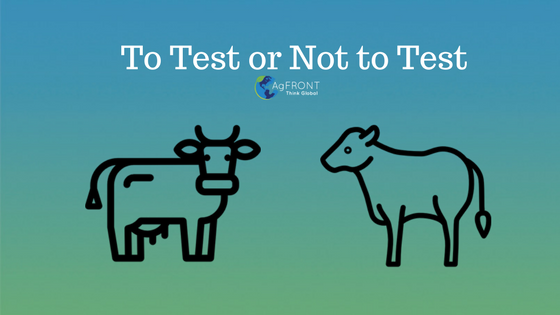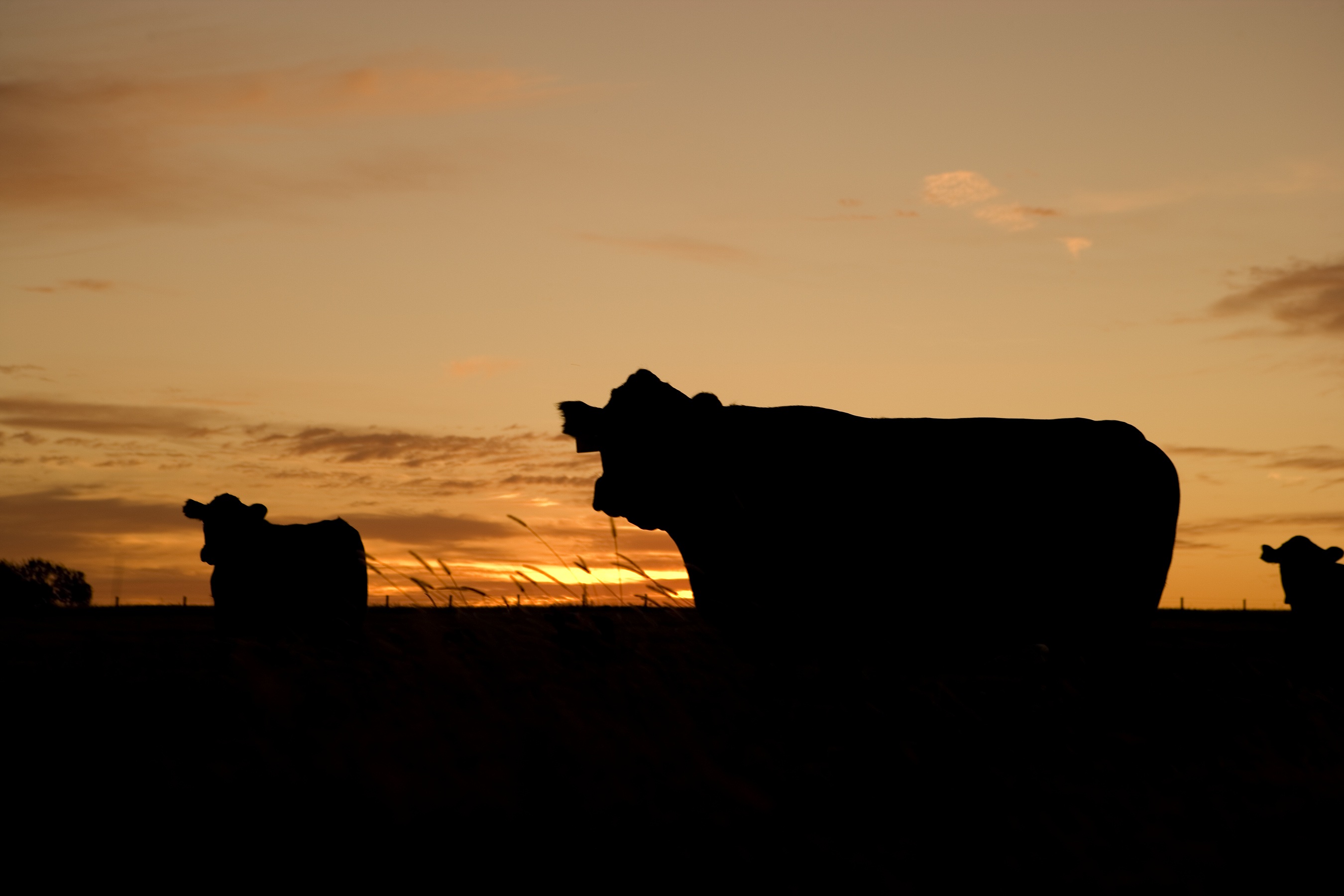To Test or Not to Test

Once upon a time 3 years ago, we got hit with tons of phone calls related to the most recent genetic abnormality that was being reported. That was the case of Developmental Duplication.
It was total panic mode. It always seemed that those press releases got out right before bull sale season. We received calls like “how many more of those are we going to get hit with? I thought we had caught them all!?”
We are all carriers of something
The thing about populations is that they are always evolving. Sometimes genetic variants provide an advantage in adapting to a new environment, increase the output of an economically important trait or sometimes they cause embryonic losses and decreased fertility. Random chances. Just like winning the lottery or getting hit by lighting. Although, I prefer winning the lottery.
In the case of Developmental Duplication, breeders started noticing the existence of animals with extra limbs, a condition described as polymelia. When enough animals were identified and genotyped (DNA profiled), a pattern emerged, a location in the genome was identified and a genetic marker discovered.
There are some interesting characteristics about Developmental Duplication. It behaves in a recessive mode, where animals need two copies of the unfavorable allele in order to develop the disease. An even more peculiar characteristic is that it shows incomplete penetrance, meaning, that sometimes genetically affected animals (“aa”) will not express the phenotype, making those hard to detect.
Recording any new conditions that show up is how virtually every single genetic abnormality was discovered. First, we see them or not (some can escape detection) and by that time we become worried about them, we have already used the genetics so much that only then we start seeing the negative effects of its massive use. In 2013, while at the Beef Improvement Federation Conference, Dr. Dorian Garrick explained this exact point in a talk entitled “Good News: They are all carriers of something”.

Practical | Online | Solutions
BeefFRONT: Genetics & Genomics Made Easy!
COURSE IS NOW CLOSED!
SIGN UP TO BE NOTIFIED OF NEW ENROLLMENT!
What about those that we can’t record?
There are thousands of other deleterious variants that don’t actually result in a live calf. So, we can’t see the outcome of their havoc, other than the outcome being a non-existent calf. Those deleterious mutations cause embryonic death and go unnoticed. We chalk that up to “she was open”.
What can we do in those cases?
How to improve our odds
We have been pretty fortunate to work in an industry where we have a lot of committed people striving to find solutions to some of our industry’s problems. There have seen great advancements in the way that we detect those abnormalities. The fact that we have a huge community pouring knowledge and expertise to sequence the industry’s most important bulls – 1,000 Bull Genome Project – will be significant in trying to predict which variations are good and which ones are bad. If we can identify those variations early on before animals become part of the breeding stock, we will be one step ahead of the problem.
Any time we pool efforts and combine research data, we improve our odds of not having yet another genetic defect go unidentified for a long time. There are several cases throughout our community where smaller grants are rolled into bigger grants with several Research Institutions carrying the water to the end of the rope. Each with their specific objectives, but the main goal to always predict and identify variations that can cause harmful effects.
Some of the “wreak havoc” variations can be easy to spot. Those are in regions of the genome where we know a protein will stop working properly (some of the Loss-of-Function mutations). Unfortunately, those are not the only kind. There are cases where the mutation lies in regulatory regions that we don’t yet know, so we rely on comparative studies with other species. One such effort is currently being tested and evaluated by a group of researchers from several Institutions and led by Dr. Jeremy Taylor from the University of Missouri. These efforts have culminated in the compilation of a chip – the GGP F250 – that harbors close to 220k new variants with the objective to detect and select against embryonic lethal variants in Beef Cattle. That’s the power of collaboration working for us.
We teach our lessons to others
A few weeks ago, I had the chance to catch up with breeders from another industry to talk about advances in genetic variation detection and some of the lessons that we have learned along the way. They are nowhere near the level of using genomics like we are. So, they will need to rely on recording any new phenotypes that appear.
Actually, the same goes for the livestock industry. Let’s remember that a predictive system when implemented is not without its kinks. It will still require that breeders be vigilant to anything that appears abnormal. The onus is still on those highly affected by those darn press releases.
Below is the summary of our conversation:
1) Some defects (or abnormalities) are recessive in nature. So, in order for the defect to be expressed phenotypically, the animal needs to carry both unfavorable copies of the allele. Those animals are defined as “aa”. Phenotypes that express a dominant pattern are much easier to detect visually. If the unfavorable allele is dominant, any animal with at least one copy will express the abnormality.
2) For case where the abnormality is recessive in nature, an animal that is not expressing the phenotype, may in fact be “AA” and it will not pass the unfavorable allele “a” to its progeny, or it can be “Aa” which means that it is a carrier and that it could pass the unfavorable allele “a” to its progeny. Or…….
3) Another point that is often forgotten is that not all genetic abnormalities show 100% penetrance. This means that an animal that is carrying both unfavorable alleles “aa” may not fully express the phenotype. If we are simply bringing back to the breeding stock only those that did not develop the disease, then we may be inadvertently bringing an animal with two copies of unfavorable alleles. This animal will pass all of its unfavorable alleles to its progeny.
As mentioned earlier, we have a very real example in Developmental Duplication (DD), where an animal is known to be genotypically affected (“aa”) but it does not fully express the abnormality in all cases.
This pattern of incomplete penetrance coupled with a defect’s recessiveness makes it more challenging to just visually appraise whether or not an animal is a good candidate for a breeding stock.
So, the sooner a phenotypic database is built, the faster the defect can be detected and managed. Remember, no phenotypes, no genotypes, no service.
Conclusion
- Thus far, by the time we have to sample the animals to discover any genetic defects in the population, the damage has already been done. Variations will always be present in every generation, because populations are always evolving (if there is reproduction in every generation, then that will always equal variation). The key is to catch the bad variation (deleterious and others) before they strike. We do that by using predictive tools that allow us to check whether variations will yield a loss of function in a gene or affect any regulatory pathways.
- It is important to know the inheritance pattern of the trait, before making any definitive conclusions as to who might be a carrier or an affected animal and before deciding to make that animal part of the breeding stock.
- The lack of full expression for certain phenotypes adds another layer of complexity when making breeding decisions solely based on visual appraisal. Hence, the importance of DNA testing.
- Once you know how a trait behaves, how its expression works and the pedigree information, you can start creating strategies for breeding your best stock.
About the Author Elisa Marques
An advocate for lifelong learning. A self-admitted textbook collector. I have been traveling around the globe since the tender age of 16 and have lived in 3 different countries. Some say that the 90's cartoon character "Carmen SanDiego" was loosely based on me, but who knows. I am a nerd at heart with a huge passion for science, marketing and teaching.
Session expired
Please log in again. The login page will open in a new tab. After logging in you can close it and return to this page.
